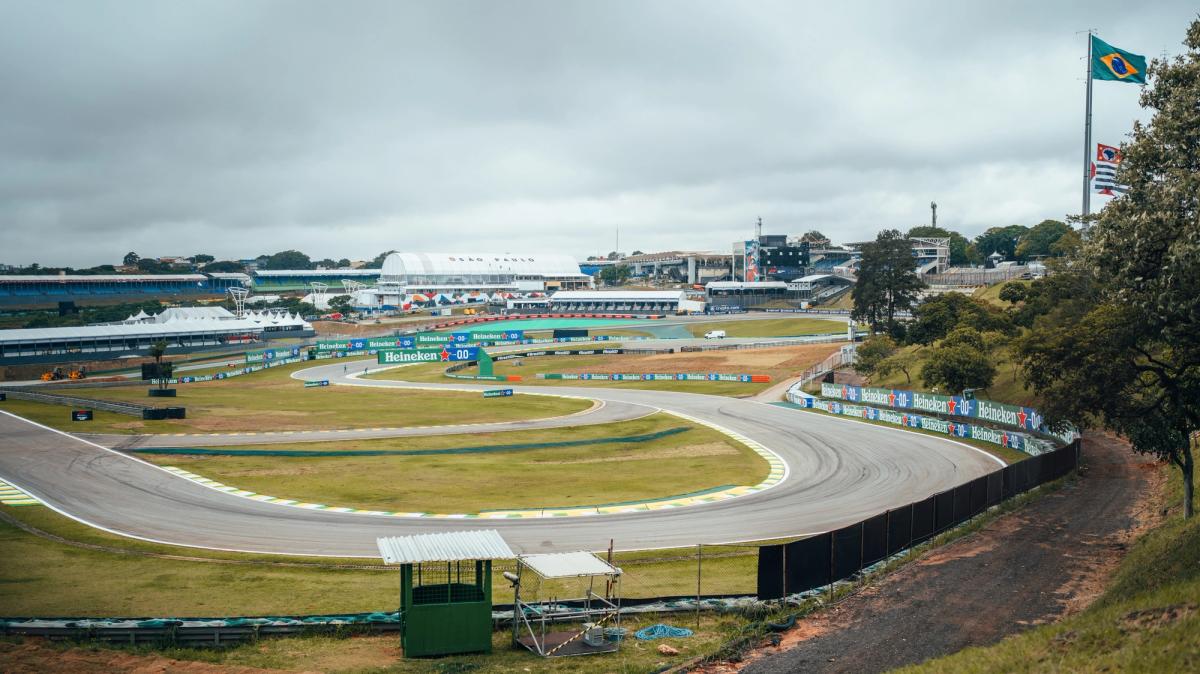We're back in Brazil for the 2023 São Paulo Grand Prix as the season end draws near.
Few nations can rival the passion that the Brazilian fans have for motorsport, with so many legendary F1 names hailing from the nation.
Ayrton Senna, Nelson Piquet, and Emerson Fittipaldi took the iconic green, yellow, and blue flag to championship glory, with even more Brazilian racers taking Grand Prix victories.
There's a long F1 history here, and we've got five things you might not know about the Sao Paulo Grand Prix.
What's in a name?
The race has become a bit of a chameleon over the years, with multiple names meaning the same thing to create a little confusion.
Many know the circuit as Interlagos, or Autódromo de Interlagos, to give it its full name, and this has persisted since an official renaming nearly four decades ago.
Autódromo José Carlos Pace has been the correct moniker since 1985, honouring the late Brazilian racing driver José Carlos Pace, who lost his life in 1977.
A more recent change came in 2021 when the Brazilian GP name left in favour of the São Paulo GP after a change in its promoter.
No matter what it's called, racing around this circuit is one of the highlights of any season.
Shop our Umbro Race Jerseys...
Mirroring Mexico
That Grand Prix name change is something last week's Mexico City GP is familiar with, after a rebranding from the Mexican GP.
Drivers also play a part in each circuit's naming, with the Autódromo Hermanos Rodríguez and Autódromo José Carlos Pace honouring each country's F1 heritage.
But there are further curious similarities between these races just one week apart.
Altitude is always a talking point when we race in Mexico City, but did you know that Sao Paulo is F1's second-highest race?
We'll be around 760m above sea level this weekend, some 100m higher than when we race around the Styrian mountains for the Austrian GP.
Furthermore, the track lengths of each are incredibly close, with Brazil's 4.309km clocking in just 5m longer than Mexico's 4.304km.
Vegas on the horizon...
See More
Successful Six
For all of the victories we at Williams Racing have in our long history of visiting Brazil, it's interesting to note we've never had a repeat winner.
Argentine driver Carlos Reutemann delivered our first triumph here in 1981, leading Alan Jones in a 1-2 finish for his third Brazilian win, but the only one driving our car.
Nelson Piquet's 1986 triumph was a Brazilian dream, with he and Lotus' Ayrton Senna locking out the top two positions in qualifying and the race.
Nigel Mansell delivered another 1-2 finish for us in 1992 on his way to the championship before Damon Hill (1996) and Jacques Villeneuve (1997) also scored a Brazilian win in their title-winning seasons.
Finally, Juan Pablo Montoya ended his four-year spell for Williams Racing on a high, taking the 2004 victory by one second ahead of Kimi Raikkonen.
Hulkenberg's High
A fresh-faced Nico Hulkenberg after his 2010 pole at Interlagos
São Paulo is a special place for Nico Hulkenberg, with the veteran German scoring his sole pole position in Formula 1 at the track for Williams Racing back in 2010.
He and teammate Rubens Barrichello tackled the drying conditions to reach Q3, with Nico's best lap time coming in over a second clear than P2.
With Rubens grabbing P6, the four championship challengers found themselves in an FW32 sandwich in the season's penultimate round.
Nico's current teammate, Kevin Magnussen, proved Brazil can be a prime spot for first-time pole sitters after his qualifying lap last year, too.
Could that ring true for Alex or Logan in 2023 when we head into Friday's qualifying?
Brazil Always Brings Us Back
Formula 1 has many, many countries that it has visited in the past, but Brazil is the most enduring outside of Europe.
The USA might've hosted more races under its various guises, but unlike the US, Brazil has never left the calendar aside from the pandemic since its 1973 debut.
2023 will be the 50th race in the country, with 10 races at Rio de Janeiro's Jacarepaguá, making it longer-lasting than many countries that Formula 1 fans will consider classics.
For example, we've had more seasons racing here than in Japan, Australia, Canada... even Hungary and Austria!
The recent contract signing means we'll continue racing in São Paulo until at least 2030, too.
Saudi Arabia 2025
Pit Wall Predictions
Related Tags:
Powered By
© the Williams Group, under licence to Williams IP Holdings LLC
Williams Grand Prix Engineering Limited is a company registered in England and Wales under company number 1297497.
Its registered office is at Grove, Wantage, Oxfordshire, OX12 0DQ
Powered By





